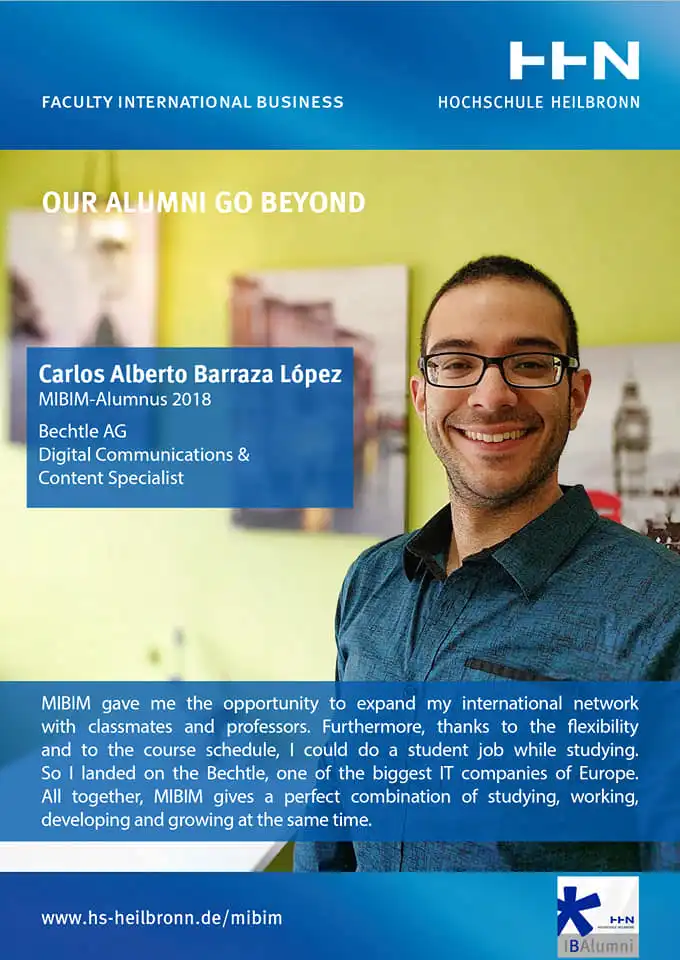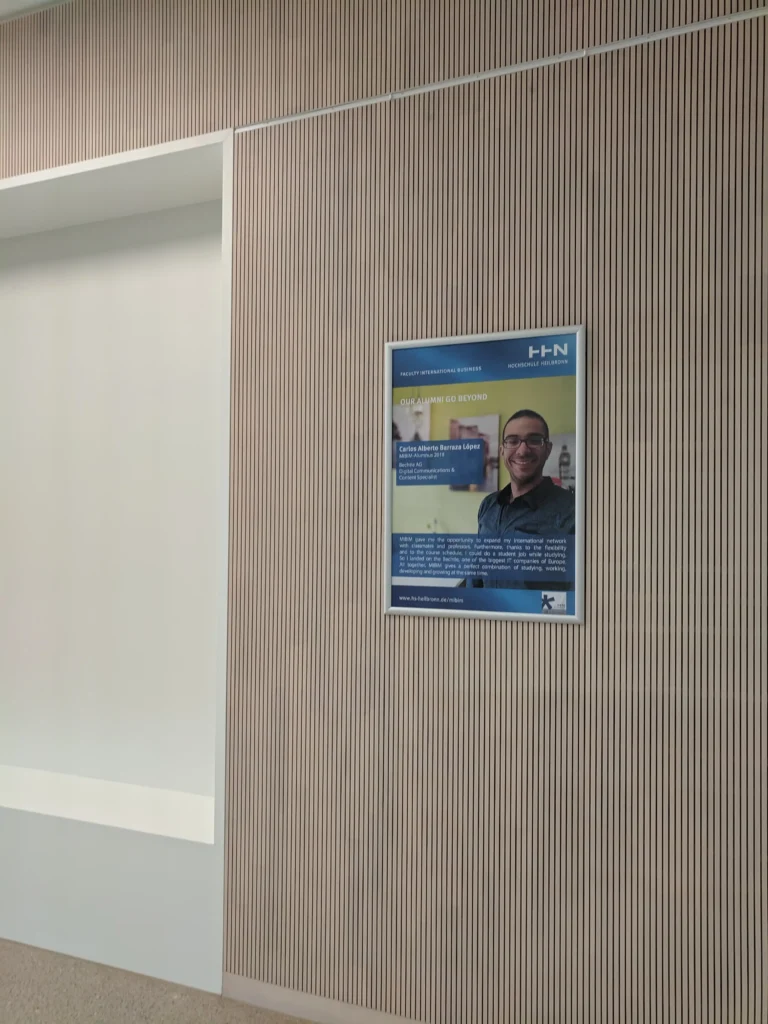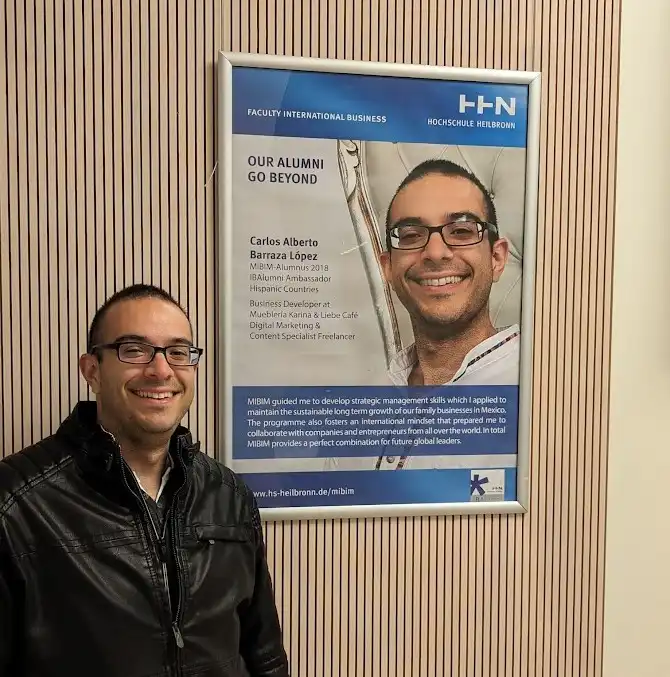

After having an exchange year in Pforzheim University in 2011, I knew I wanted to go back again and live in Germany.
Living abroad is one of the most enrichful experiences a person can have, since it opens your consciousness to a whole different way of living compared to your home country.
As one experience a different culture, the person start to learn to have an open mindset, to learn from different attitudes, values and behaviours, and it enrich its own perspective of the world as one emerge into the adoptive culture.
I wanted to have again that international experience, so when I searched for programs that were taught in english in Germany, I found through DAAD the Master in International Business and Intercultural Management from the Hochschule Heilbronn.
Of course, one of the questions as a foreigner are, where is Heilbronn and is Hochschule Heilbronn a good University?
So, internationals usually go to Google Maps and search for Heilbronn and its pictures to have an idea of how the city looks.
Then, there are options to search online for the HHN rankings, search in Facebook groups and contact profiles who have studied there to get references.
But for me, it doesn’t matter how many good or bad opinions or reviews you might read, until one experience whatever product, service or in this case study program, is when one can really judge for him or herself if it worth the time, effort and money. Opinions are just useful to get an overall idea of what to expect.
Heilbronn can be a controversial city in my opinion.
As one lives in Heilbronn, and start to know better the German culture, one start to listen a lot, Heilbronn is an awful city, is horrible, is boring and plenty of negative opinions from Germans. I also was asked, what I was doing there. But honestly up till now, I never understood that self opinion of the city. As I have said, it all depends with which eyes you look into. For me, Heilbronn is a really nice city with marvelous vineyards and in case you want to experience more restaurants, clubs or other areas, Heilbronn is well located to easily travel to another cities.
Certainly, Heilbronn is undergoing a big transformation, and so does its universities.
In 2016, there were still plenty of constructions to do around the Bildungscampus.
I think, our MIBIM group was the first generation to use a brand new building, the N-Building.
So merely talking about the location, the Bildungscampus buildings are really nice and practically new. The only complaints I could have is that in the N-Building the toilettes are in the upper floors, so if you have classes in the main floor you will have to be going up stairs. As well, during summer, the rooms were not properly adequate to handle warmer days, so just opening the windows was what we had to get more air circulating. But besides that, the area is close to the city center and is pretty accesible using the bus or bikes.
Comparing the Bildungscampus with campus Sontheim, for sure there is a big difference, since the Bildungscampus has newer buildings.
In terms of organization as an university, the paperwork that has to be done to apply or any other process within the university was for me relatively simple. As well, sending the printed version of the master thesis to the Prüfungsamst had to be via post mail.
Hochschule Heilbronn counts with professors with a wide variety of experiences, therefore the opinion of a “good” or “bad” professor will differ according to what each student was expecting to learn from them and how they perceived their classes.
Overall for the MIBIM program, I could say that around 60% or 70% of the professors kept their courses interesting. But honestly, I prefer to learn more from professors’ experiences and stories rather than putting too much attention to the course materials. That is just my learning process of what I consider more valuable. For example, spending some time having lunch together at the “Mensa” and chatting with professors was more valuable for me than the course itself, since in those time frames, they were sharing some of their practical experiences.
Yes, there are some boring classes, but as well there are the ones that were interesting. Some people enjoyed the marketing class, and I didn’t. It was one of my worst grades, and I already had a job in marketing. Irony? Yes, but as I said, it all depends on the teaching styles and the course contents. And in contrast, the sustainability course was more appealing for me, even though at that time I haven’t consider myself too oriented to that topic.
Since the MIBIM program is also focused in the intercultural management, sharing time with international peers made the program better. Certainly, we did had some classes that talk about topics such as the cultural differences and the Hofstede framework, but it is way better to learn it from the practical experiences by collaborating with international classmates.
I am so thankful that the combination of people in our program made the master so good to be in, during class time and outside the university. Since Heilbronn is a smaller city compared to Stuttgart or Munich, meeting up for hanging out together makes it easier due to the distances and also due to the few places to go to. In Heilbronn, I ended up randomly meeting someone that I knew across the street.
If you are person who values university ranking or are looking for an university that is high on university rankings or in the QS Ranking, then Heilbronn is not your option.
Heilbronn does not appear on the QS Ranking.
You can check the information about the CHE Ranking here:
Studying in Heilbronn has that opportunity to exchange not only the German culture but from different cultures, since it hosts local and international students.
I do recommend the program and not just because they invited me to give my testimonial for their promotionals, but because as I mention, the time spent with classmates and professors, made the time in Heilbronn a really good experience.
Plus, if you are aiming to follow up your professional career in Germany, there are plenty of companies in the area. And since international business could be a study that has plenty of professional applications, the job roles are not limited to just a specific department.
